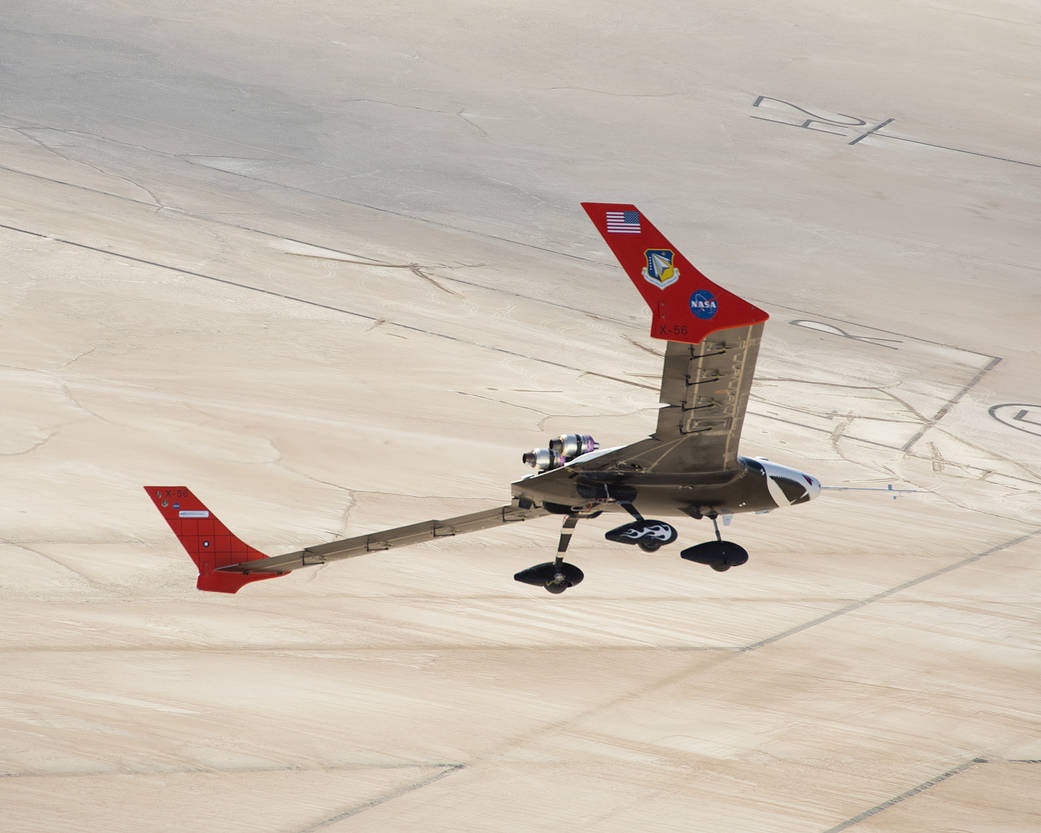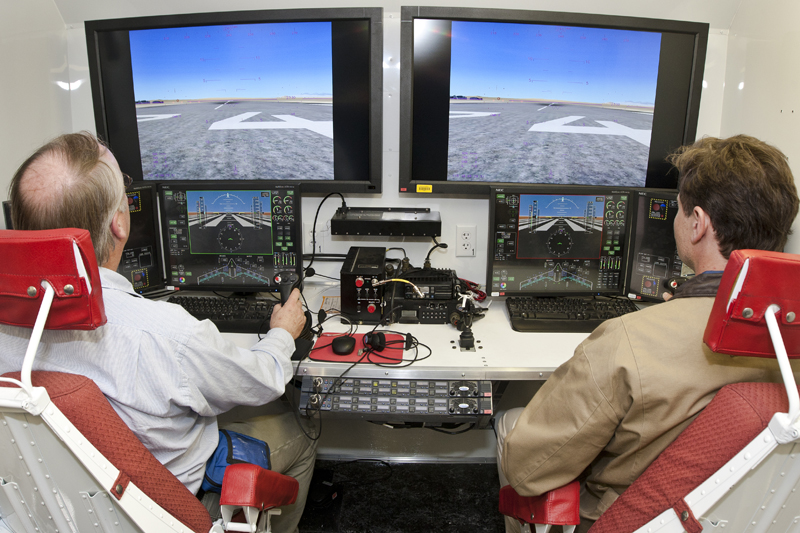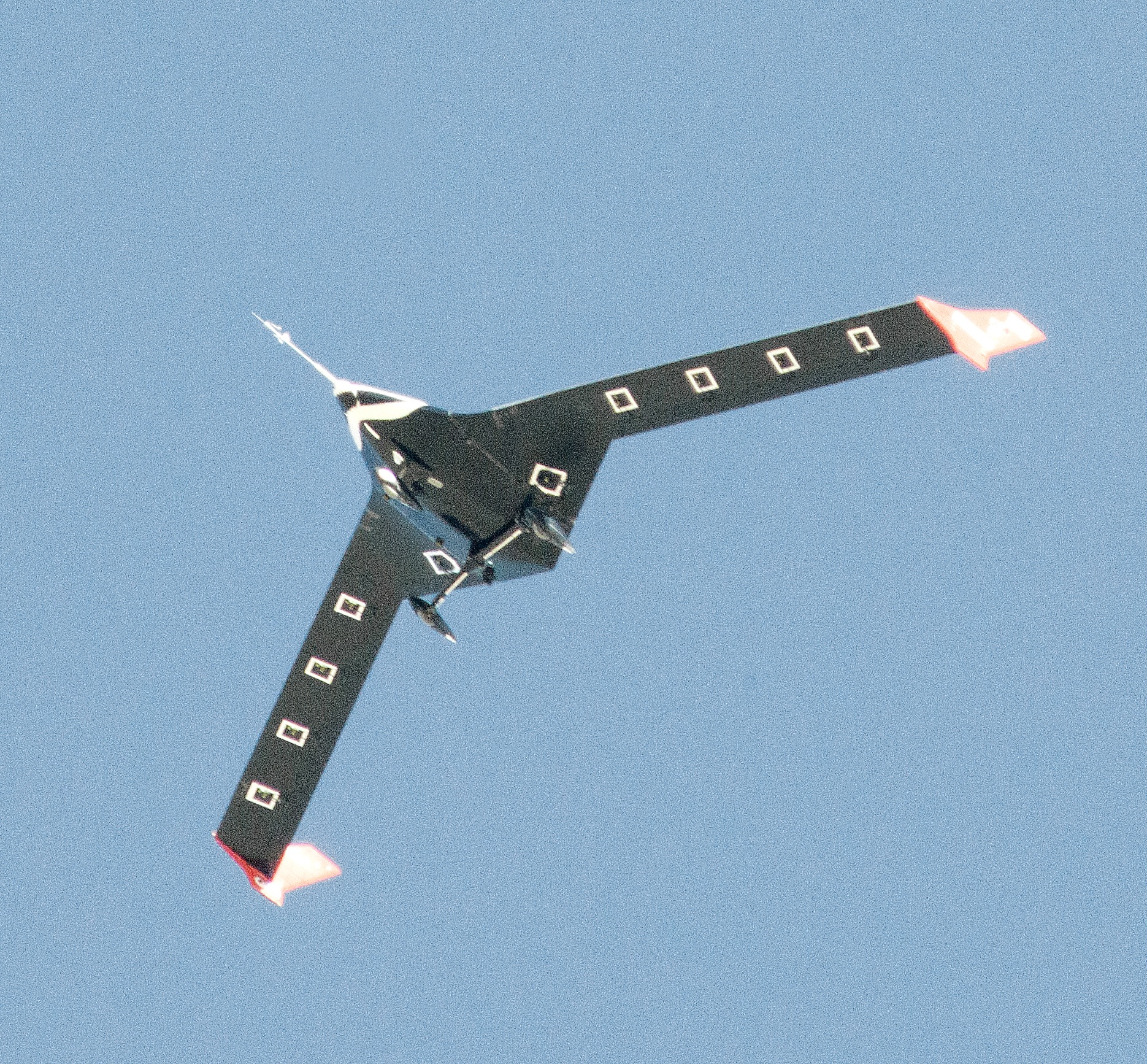Long, thin, high-aspect-ratio wings are considered crucial to the design of future long-range aircraft, including fuel-efficient airliners and cargo transports. Unlike the short, stiff wings found on most aircraft today, slender, flexible airfoils are susceptible to uncontrollable vibrations, known as flutter, and may be stressed by bending forces from wind gusts and atmospheric turbulence. In order to improve ride quality, efficiency, safety and the long-term health of flexible aircraft structures, NASA is investigating key technologies for active flutter suppression and gust-load alleviation.
Research in these areas will be conducted at NASA’s Armstrong Flight Research Center with the X-56A Multi-Utility Technology Testbed, a small, remotely piloted experimental aircraft developed by Lockheed Martin Skunk Works for the Air Force Research Laboratory (AFRL). The subscale aircraft is 7.5 feet long, has a 28-foot wingspan, weighs about 480 pounds, and is powered by two small 90-pound thrust JetCat P400 turbojet engines.
The modular X-56A system includes two center bodies, a set of stiff wings, three sets of flexible wings, a ground control station, and a transportation trailer. The X-56A has easily removed wings and is convertible to other wing configurations, such as a joined-wing planform or a wing-tail configuration. The aircraft is equipped with a ballistic parachute recovery system, which is intended to recover the fuselage and the majority of the aircraft systems in the event of an inflight wing failure.
The initial flight tests of the X-56A system, performed by Lockheed and AFRL in the latter half of 2013 and extending into early 2014, collected flight data on highly flexible structures and flutter suppression control technology. Initially flown with a conventional stiff wing, the aircraft is subsequently being used to evaluate active flutter suppression with the flexible wings in early 2014. After these flights are completed, the X-56A will be transferred to NASA Armstrong to be used for research into lightweight structures and advanced control technologies for future efficient, environmentally friendly transport aircraft.
Under a five-year project supported by the Fixed Wing Project of NASA’s Fundamental Aeronautics Program, NASA is developing a flexible-wing flight control system and advanced sensors to measure wing shape and detect airflow separation. The project plans to use these to fly the X-56A with a slender, flexible wing with a much higher aspect ratio than currently used on commercial airliners. Research results from the low-speed sub-scale X-56A will benefit future designs for both subsonic and supersonic aircraft.
Objectives
The goal of the X-56A project is to advance aeroservoelastic technology through flight research using a low-cost, modular, remotely piloted aircraft. The aircraft is being tested using flight profiles where flutter occurs in order to demonstrate that onboard instrumentation can not only accurately predict and sense the onset of wing flutter, but also be used by the control system to actively suppress aeroelastic instabilities.
Applied to future designs, such technologies will enable construction of longer, lighter, more flexible wings for a variety of crewed and remotely piloted aircraft. NASA engineers will explore issues related to active flutter suppression by adjusting software programs in the X-56A aircraft’s flight control computer. Researchers also expect to learn how to better ease gust loads, which will make flexible airplanes safer during encounters with in-flight turbulence. Several key goals include:
- Maturation of flutter-suppression technologies
- Reduction of structural weight to improve fuel efficiency and range
- Increase aspect ratio by 30% to 40% to reduce aerodynamic drag
- Promote improved long-term structural integrity by reducing gust loads
Designing the next generation of aerospace vehicles will pose serious challenges in modeling, predicting, and controlling potentially destructive aeroservoelastic dynamics and finding ways to exploit efficiency gains from lighter, more flexible structures.



































